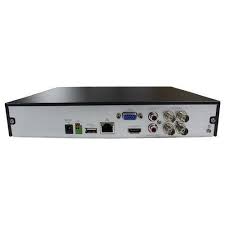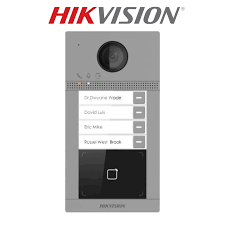A 4 channel DVR (Digital Video Recorder) is a device that records video footage from up to four cameras simultaneously. It is an essential component of a CCTV (Closed Circuit Television) system, which is used for surveillance and security purposes in various settings, such as homes, offices, stores, and public spaces.
One of the main advantages of a 4 channel DVR is its ability to record multiple camera feeds at once. This means that users can monitor different areas of their property or premises simultaneously, without having to switch between cameras manually. This feature makes it easier to detect and respond to potential security threats in real-time.
Another advantage of a 4 channel DVR is its storage capacity. Most models come with built-in hard drives that can store several days or even weeks’ worth of footage, depending on the resolution and frame rate settings. This allows users to review past events and incidents for investigative or legal purposes if needed.
In addition to recording video footage, a 4 channel DVR also allows users to customize their CCTV system according to their specific needs. For example, they can set up motion detection alerts that notify them via email or push notifications when movement is detected in a particular area. They can also adjust the frame rate and resolution settings for each camera feed based on the level of detail required.
Furthermore, some 4 channel DVRs come with advanced features such as remote access and control. This means that users can view live or recorded footage from their CCTV system on their smartphones or computers from anywhere in the world with an internet connection. They can also control PTZ (Pan-Tilt-Zoom) cameras remotely using their mobile devices or computers.
Overall, a 4 channel DVR is an excellent investment for anyone who wants to enhance their security and surveillance capabilities. It provides multiple benefits such as simultaneous recording of multiple camera feeds, ample storage capacity, customization options, and remote access and control features. With its advanced technology and user-friendly interface, a 4 channel DVR is a reliable and efficient solution for all your CCTV needs.
8 Essential Tips for Maximizing Your 4 Channel DVR System
- Make sure you have enough hard drive space for the recordings you want to make.
- Ensure that the cameras are compatible with your 4 channel DVR before purchasing them.
- Familiarize yourself with the different features and settings available on your 4 channel DVR to get the most out of it.
- Set up motion detection alerts so that you will be notified if any activity is detected in the areas being monitored by your cameras and DVR system.
- Connect your 4 channel DVR to a monitor or TV so that you can easily view live footage from each camera as well as playback recordings from any connected device such as a laptop or smartphone/tablet device.
- Consider investing in an external hard drive if you need more storage capacity than what is available on your 4 channel DVR’s internal hard drive(s).
- Make sure to back up all important footage onto an external hard drive or other secure storage option in case something happens to your 4 channel DVR system or its internal hard drives fail due to power surges, etc..
- Check whether there are any updates available for your 4 channel DVR regularly, as these may provide additional features and improved security measures which could help protect against malicious attacks on your system
Make sure you have enough hard drive space for the recordings you want to make.
When it comes to setting up a CCTV system with a 4 channel DVR, one of the most important considerations is the amount of hard drive space you will need for your recordings. It is essential to ensure that you have enough storage capacity to store all the footage you want to capture.
The amount of hard drive space required will depend on several factors, such as the number of cameras you are using, the resolution and frame rate settings, and the length of time you want to keep the recordings. For example, if you are using four cameras with high-resolution settings and recording continuously for 24 hours a day, you will need a larger hard drive than if you are only recording motion-activated clips.
To determine how much storage capacity you need for your CCTV system, it is recommended to use a DVR storage calculator. This tool allows you to input various factors such as camera resolution, frame rate, and recording duration and provides an estimate of the amount of hard drive space required.
It is always better to have more storage capacity than less when it comes to CCTV systems. This ensures that you have enough space for unexpected events or incidents that may require longer recordings. It also allows you to review past footage for investigative or legal purposes if needed.
In conclusion, before setting up your 4 channel DVR CCTV system, make sure that you have enough hard drive space for your recordings. Use a DVR storage calculator or consult with a professional installer to determine the appropriate amount of storage capacity required based on your specific needs. With adequate storage capacity, you can ensure that your CCTV system operates efficiently and effectively in providing enhanced security and surveillance capabilities.
Ensure that the cameras are compatible with your 4 channel DVR before purchasing them.
When it comes to setting up a CCTV system with a 4 channel DVR, it’s essential to ensure that the cameras you choose are compatible with your DVR. This is because not all cameras work with all DVRs, and using incompatible cameras can result in poor image quality or no video feed at all.
To avoid this issue, it’s important to do some research before purchasing cameras for your CCTV system. Check the specifications of your 4 channel DVR to determine which types of cameras are compatible with it. Some DVRs may only support analog cameras, while others may work with both analog and IP (Internet Protocol) cameras.
Once you have determined the compatibility requirements, choose cameras that meet those specifications. Make sure to purchase high-quality cameras that offer good resolution and clarity, as this will ensure that you get the best possible image quality from your CCTV system.
In addition to compatibility, also consider other factors such as the camera’s field of view, night vision capabilities, and weather resistance if you plan on installing them outdoors. These features can make a significant difference in how well your CCTV system performs in different lighting conditions and weather situations.
By ensuring that your cameras are compatible with your 4 channel DVR before purchasing them, you can save yourself time and money in the long run. You’ll have a reliable CCTV system that provides clear and accurate footage for all your security needs.
Familiarize yourself with the different features and settings available on your 4 channel DVR to get the most out of it.
If you have a 4 channel DVR as part of your CCTV system, it’s essential to familiarize yourself with the different features and settings available on it. By doing so, you can get the most out of your device and optimize its performance.
One of the first things you should do is read the user manual that comes with your 4 channel DVR. This will give you a comprehensive understanding of how to operate and customize your device. It will also provide details on all the features and settings available, such as motion detection, recording modes, resolution, and frame rate.
Once you have a basic understanding of your 4 channel DVR’s capabilities, take some time to experiment with different settings and features. For example, try adjusting the resolution or frame rate for each camera feed to see how it affects the quality of video footage recorded. You can also set up motion detection alerts to notify you when movement is detected in certain areas.
Another important feature to explore is remote access and control. With this feature, you can view live or recorded footage from your CCTV system on your smartphone or computer from anywhere in the world with an internet connection. You can also control PTZ cameras remotely using your mobile devices or computers.
By familiarizing yourself with all these different features and settings, you can customize your 4 channel DVR according to your specific needs. This will help you get the most out of your device and enhance its performance for optimal security and surveillance purposes.
In conclusion, taking the time to familiarize yourself with the different features and settings available on your 4 channel DVR is crucial for optimizing its performance. By doing so, you can customize it according to your specific needs and get the most out of this valuable security tool.
Set up motion detection alerts so that you will be notified if any activity is detected in the areas being monitored by your cameras and DVR system.
Setting up motion detection alerts on your 4 channel DVR is a simple and effective way to enhance the security of your property or premises. By doing so, you will be notified via email or push notifications if any activity is detected in the areas being monitored by your cameras and DVR system.
This feature can be particularly useful for those who want to keep an eye on their property when they are away. For instance, if you are on vacation or out of town for work, you can rest easy knowing that you will be alerted immediately if any movement is detected in your home or office.
Moreover, motion detection alerts can help reduce false alarms and save storage space on your DVR’s hard drive. Instead of recording non-stop footage, which can quickly fill up the storage space and make it difficult to find relevant footage when needed, motion detection alerts only record when there is movement detected in the monitored areas.
To set up motion detection alerts on your 4 channel DVR, simply access the settings menu and enable the motion detection feature for each camera feed. You can adjust the sensitivity level and set up a notification schedule based on your preferences.
In conclusion, setting up motion detection alerts on your 4 channel DVR is a smart move that can significantly improve the security of your property or premises. It provides peace of mind knowing that you will be alerted immediately if any suspicious activity is detected in the monitored areas.
Connect your 4 channel DVR to a monitor or TV so that you can easily view live footage from each camera as well as playback recordings from any connected device such as a laptop or smartphone/tablet device.
Connecting your 4 channel DVR to a monitor or TV is an essential step in setting up your CCTV system. By doing so, you can easily view live footage from each camera and playback recordings from any connected device, such as a laptop or smartphone/tablet device.
The process of connecting your 4 channel DVR to a monitor or TV is relatively simple. All you need is an HDMI cable or VGA cable, depending on the type of connection port available on your DVR and monitor/TV. Simply plug one end of the cable into the HDMI/VGA port on your DVR and the other end into the corresponding port on your monitor/TV.
Once connected, you can access the user interface of your 4 channel DVR directly from your monitor/TV. This allows you to navigate through different camera feeds, adjust settings, and playback recordings with ease.
Having a dedicated monitor or TV for your CCTV system provides several benefits. Firstly, it allows for real-time monitoring of all camera feeds simultaneously, which is particularly useful for security purposes. Additionally, it provides a larger display area for viewing footage and makes it easier to identify any potential security threats.
Furthermore, by connecting your 4 channel DVR to a monitor or TV, you can also view footage remotely using devices such as laptops or smartphones/tablets. This provides added flexibility and convenience when monitoring your property or premises.
In conclusion, connecting your 4 channel DVR to a monitor or TV is an important step in setting up your CCTV system. It allows for real-time monitoring of all camera feeds simultaneously and provides added flexibility when viewing footage remotely using other devices. So make sure to connect yours today!
Consider investing in an external hard drive if you need more storage capacity than what is available on your 4 channel DVR’s internal hard drive(s).
If you are using a 4 channel DVR for your CCTV system, you may find that the internal hard drive(s) provided with the device are not enough to store all the video footage you need. This is especially true if you have high-resolution cameras or need to record continuously for long periods.
In such cases, it is advisable to invest in an external hard drive that can provide additional storage capacity. An external hard drive can be easily connected to your 4 channel DVR using a USB or eSATA cable, and it will function as an extension of your internal hard drive(s).
One of the advantages of using an external hard drive is that it provides more flexibility in terms of storage capacity. You can choose a size that suits your needs, whether it’s a few hundred gigabytes or several terabytes. This means that you can store more video footage without having to worry about running out of space.
Another advantage of using an external hard drive is that it can be easily removed and replaced if needed. This makes it easier to transfer footage to another device or take it with you for further analysis or backup purposes.
When choosing an external hard drive for your 4 channel DVR, make sure to select one that is compatible with the device and has enough storage capacity for your needs. Also, consider factors such as reliability, durability, and data transfer speed when making your selection.
In conclusion, investing in an external hard drive is a smart choice if you need more storage capacity than what is available on your 4 channel DVR’s internal hard drive(s). It provides flexibility, convenience, and peace of mind knowing that all your video footage is safely stored and easily accessible when needed.
Make sure to back up all important footage onto an external hard drive or other secure storage option in case something happens to your 4 channel DVR system or its internal hard drives fail due to power surges, etc..
When it comes to ensuring the safety and security of your property or premises, a 4 channel DVR system is an essential tool. However, it’s important to remember that even the most advanced technology can fail due to unforeseen circumstances such as power surges or other technical glitches. That’s why it’s crucial to back up all important footage from your 4 channel DVR onto an external hard drive or other secure storage option.
Backing up your footage not only protects you in case of a system failure, but it also provides you with peace of mind knowing that your valuable data is safe and accessible. In the event of a break-in or other incident, having a backup of your surveillance footage can also help law enforcement authorities identify suspects and build a stronger case.
Fortunately, backing up your footage is a straightforward process with most 4 channel DVR systems. You can either transfer the data manually onto an external hard drive or set up automatic backups using cloud-based storage solutions. Some systems even come with built-in backup options that allow you to copy footage onto USB drives or other portable devices.
In conclusion, taking the time to back up all important footage from your 4 channel DVR system is a smart and simple way to protect yourself and your property. By doing so, you can ensure that you have access to critical surveillance data in case of emergencies or system failures. So don’t wait until it’s too late – take action today and safeguard your valuable information!
Check whether there are any updates available for your 4 channel DVR regularly, as these may provide additional features and improved security measures which could help protect against malicious attacks on your system
If you own a 4 channel DVR, it is crucial to keep it up-to-date with the latest firmware updates. These updates can provide additional features and improved security measures that could help protect your system against malicious attacks.
Hackers are always on the lookout for vulnerabilities in security systems, and outdated firmware is one of the most common ways they can gain access to your CCTV system. By exploiting these vulnerabilities, hackers can gain unauthorized access to your cameras and footage, putting your property and privacy at risk.
To prevent this from happening, it is essential to check for firmware updates regularly. Most manufacturers release updates periodically to address any known issues or vulnerabilities in their systems. These updates may also include new features that can enhance the functionality of your 4 channel DVR.
Updating your firmware is a simple process that can be done through the settings menu of your 4 channel DVR. You can check for updates manually or set up automatic updates to ensure that you always have the latest version installed.
By keeping your 4 channel DVR up-to-date with the latest firmware, you can ensure that your CCTV system is secure and protected against potential threats. It’s a small step that could make a big difference in safeguarding your property and privacy.




